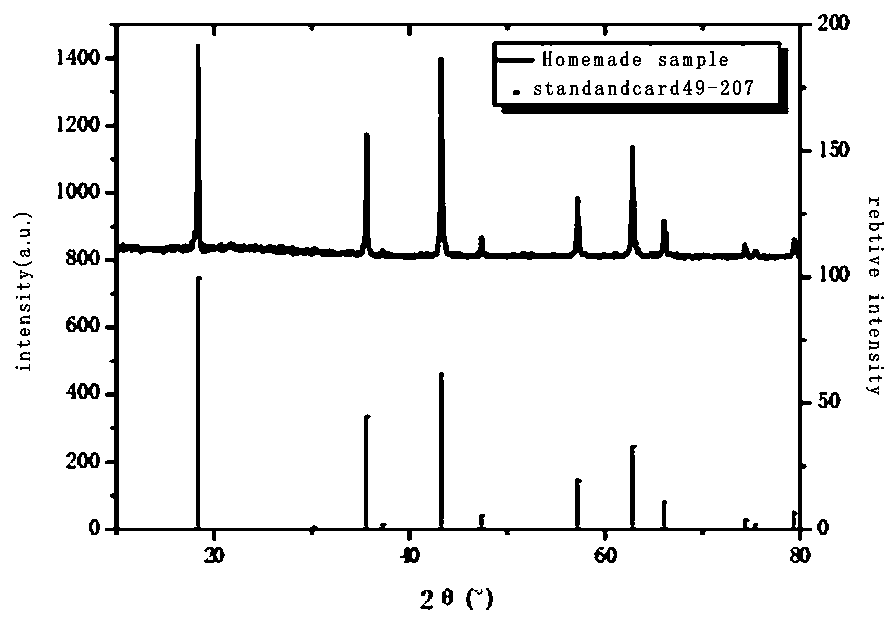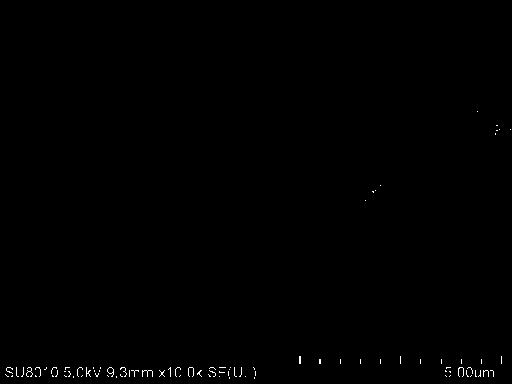Lithium titanate negative electrode material having multistage carbon-clad network structure, and preparation method and application thereof
A network structure and negative electrode material technology, applied in the direction of structural parts, battery electrodes, electrical components, etc., can solve the problems of difficult and fast transmission of lithium ions and electrons, inability to fully utilize the material capacity, lack of conductive network structure, etc., to achieve high-rate charging Improvement of discharge and internal capacity, good electrical conductivity, and suppression of excessive growth
- Summary
- Abstract
- Description
- Claims
- Application Information
AI Technical Summary
Problems solved by technology
Method used
Image
Examples
Embodiment 1
[0063] Weigh 17 ml of tetrabutyl titanate, 30 ml of graphene oxide dispersion with a concentration of 5 mg / ml, add it to 250 ml of absolute ethanol, add 10 ml of glacial acetic acid, and place it in a closed container with magnetic stirring to obtain ethanol Dispersions.
[0064] Slowly add 250 ml of deionized water dropwise, and stir vigorously during the addition of water at a speed of 500-1000 rpm to form a gray-black suspoemulsion.
[0065] The emulsion was transferred to a reactor with a volume of 1 L, and hydrothermally reacted in an oven at 150 °C for 6 h.
[0066] Use a circulating water vacuum pump to vacuum filter, collect and filter the precipitate, wash with absolute ethanol three times, add an equal volume of absolute ethanol to the reaction solution each time, and dry in vacuum at 60 °C for 12 h to form a nanoscale in-situ doped novel The titanium dioxide precursor of the conductive carbon material, wherein the doping ratio of carbon element is 4wt%.
[0067] T...
Embodiment 2
[0073]Weigh 17 ml of tetrabutyl titanate and 50 ml of carbon nanotube dispersion, add them to 250 ml of absolute ethanol, add 10 ml of glacial acetic acid, and place them in a closed container with magnetic stirring to obtain a dispersion.
[0074] Slowly add 250 ml of deionized water dropwise, and stir vigorously during the addition of water at a speed of 500-1000 rpm to form a gray-black suspoemulsion.
[0075] The emulsion was transferred to a reaction kettle with a volume of 1 L, and hydrothermally reacted in an oven at 180 °C for 2 h.
[0076] Use a circulating water vacuum pump to vacuum filter, collect and filter the precipitate, wash with absolute ethanol three times, add an equal volume of absolute ethanol to the reaction solution each time, and dry in vacuum at 60 °C for 12 h to form a nanoscale in-situ doped novel Titanium dioxide precursor of conductive carbon material, wherein the doping ratio of carbon element is 3.4wt%.
[0077] The precursor was pulverized and...
Embodiment 3
[0082] Weigh 20 ml of tetrabutyl titanate and 0.17 g of Ketjen black, add it to 300 ml of absolute ethanol, add 10 ml of nitric acid (concentration 68 wt%), place in a closed container and magnetically stir evenly to obtain a dispersion.
[0083] Slowly add 300 ml of deionized water dropwise, and stir vigorously during the addition of water at a speed of 500-1000 rpm to form a gray-black suspoemulsion.
[0084] The emulsion was transferred to a reactor with a volume of 1 L, and hydrothermally reacted in an oven at 150 °C for 6 h.
[0085] Use a circulating water vacuum pump to vacuum filter, collect and filter the precipitate, wash with absolute ethanol three times, add an equal volume of absolute ethanol to the reaction solution each time, and dry in vacuum at 60 °C for 12 h to form a nanoscale in-situ doped novel A titanium dioxide precursor of a conductive carbon material, wherein the doping ratio of carbon element is 3.0wt%.
[0086] The precursor was crushed through a 20...
PUM
| Property | Measurement | Unit |
|---|---|---|
| particle size | aaaaa | aaaaa |
| thickness | aaaaa | aaaaa |
| diameter | aaaaa | aaaaa |
Abstract
Description
Claims
Application Information
 Login to View More
Login to View More - R&D
- Intellectual Property
- Life Sciences
- Materials
- Tech Scout
- Unparalleled Data Quality
- Higher Quality Content
- 60% Fewer Hallucinations
Browse by: Latest US Patents, China's latest patents, Technical Efficacy Thesaurus, Application Domain, Technology Topic, Popular Technical Reports.
© 2025 PatSnap. All rights reserved.Legal|Privacy policy|Modern Slavery Act Transparency Statement|Sitemap|About US| Contact US: help@patsnap.com



